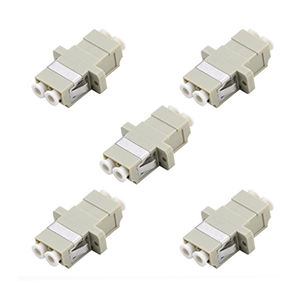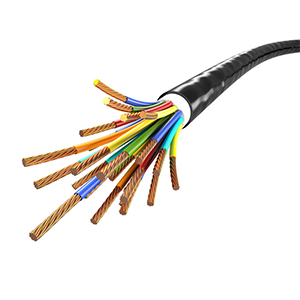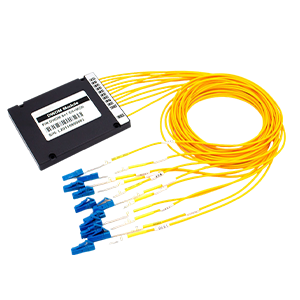Optical modules undoubtedly play an important role in optical networks. This article will explore the operating wavelength of Cisco multimode SFP optical modules. We will first outline the main technical standards and specifications of optical modules and analyze the differences between different types of optical modules in application scenarios. Next, we will introduce the physical characteristics of Cisco multimode SFP optical modules and explain the advantages of this type of optical module in terms of transmission performance.
We will explain in detail the standard operating wavelength of Cisco multimode SFP optical modules and analyze the key factors that affect the selection of operating wavelengths. In addition, we will list the common application environments of Cisco multimode SFP optical modules and provide suggestions and precautions for selecting this type of optical module.
Optical module technical standards and classifications
Let me summarize the main technical standards and specifications of optical modules and the differences between different types of optical modules in practical applications.
Main technical standards and specifications of optical modules:
(1) MSA (Multi-Source Agreement) standard
- Main technical standards of optical modules, formulated and maintained by the manufacturer alliance.
- Covering the requirements of physical dimensions, optoelectronic parameters, interfaces, etc. of optical modules.
(2) SFP (Small Form-factor Pluggable) standard
- A widely used small optical module standard, including SFP, SFP+, etc.
- Defines the external dimensions, electrical interfaces, optical performance, etc. of optical modules.
(3) QSFP (Quad Small Form-factor Pluggable) standard
- High-density optical module standard, which can provide higher port density.
- Including different versions such as QSFP, QSFP+, and QSFP28.
(4) CFP (C Form-factor Pluggable) standard
- A larger optical module standard, mainly used for high-bandwidth applications.
- Defines different levels of optical modules such as CFP, CFP2, and CFP4.
(5) XFP (10 Gigabit Small Form Factor Pluggable) standard
- Originally an optical module standard for 10GbE applications.
- Has been gradually replaced by newer standards such as SFP+.
In general, these standards define unified requirements for optical modules in terms of size, interface, performance, etc., ensuring compatibility between products from different manufacturers.
Differences between different types of optical modules in application scenarios:
(1) SFP/SFP+
- Widely used in medium and low-speed networks such as Gigabit Ethernet and Fibre Channel.
- Small size, low power consumption, suitable for distributed and aggregation layer networks.
(2) QSFP/QSFP+/QSFP28
- Mainly used in high-bandwidth scenarios such as high-speed Ethernet and InfiniBand.
- 4-channel design, providing higher port density and transmission rate.
(3) CFP/CFP2/CFP4
- Applied in ultra-high-speed network environments such as 100GbE and 400GbE.
- Large size, but can provide more powerful photoelectric conversion and signal processing capabilities.
(4) XFP
- Originally used in 10GbE networks, it has been replaced by newer standards.
- Currently mainly used for upgrading and renovating some traditional equipment.
In general, different types of optical modules differ in terms of size, interface specifications, transmission rate, etc., which determines their applicable scenarios in actual applications. Users need to choose the appropriate optical module standard based on network bandwidth requirements and equipment requirements.
Technical features of Cisco multimode SFP optical modules
Let me introduce you to the technical features of Cisco multimode SFP optical modules.
Physical features of Cisco multimode SFP optical modules:
(1) Size
- Complies with SFP optical module standards, compact size, easy to install and integrate.
- The length is about 57mm, the width is 13.4mm, and the thickness is 8.5mm.
(2) Interface type
- Adopts standard optical fiber interface, usually LC type optical fiber connector.
- Supports duplex optical fiber transmission, that is, the transmit and receive optical fibers are separated.
(3) Material and structure
- The shell is made of high temperature resistant and fireproof engineering plastic material.
- The interior adopts anti-interference metal shielding structure to improve reliability.
(4) Working environment
- Can work in the temperature range of 0-70℃ and adapt to harsh environments.
- It has high anti-vibration and anti-fall performance.
In general, the dimensions, interface type, material structure, etc. of Cisco multimode SFP optical modules all meet the SFP standard and meet the requirements of general integration and environmental adaptability.
Advantages of Cisco multimode SFP optical modules in transmission performance:
(1) Transmission rate
- Supports 1000Mbps Gigabit Ethernet transmission rate.
- Complies with 1000BASE-SX fiber Ethernet standard.
(2) Transmission distance
- The transmission distance on multimode optical fiber can reach 550 meters.
- Compared with single-mode optical fiber, multimode optical fiber has a larger transmission range.
(3) Bandwidth Utilization
- Using 850nm wavelength, it takes advantage of the broadband characteristics of multimode optical fiber.
- It can maximize the transmission bandwidth of multimode optical fiber.
(4) Power Consumption and Reliability
- Low power consumption, generally less than 1W.
- It has high photoelectric conversion efficiency and long-term reliability.
In general, Cisco multimode SFP optical modules are very suitable for medium-speed network applications such as Gigabit Ethernet due to their standard physical characteristics, excellent transmission rate, distance and bandwidth utilization. This performance advantage makes it widely used in actual deployment.
Operating wavelength of Cisco multimode SFP optical module
Let me introduce you in detail the standard operating wavelength of Cisco multimode SFP optical module and the key factors affecting the selection of operating wavelength.
Standard operating wavelength of Cisco multimode SFP optical module:
(1) Operating wavelength
- The standard operating wavelength of Cisco multimode SFP optical module is 850nm.
- This wavelength is in the near-infrared spectrum.
(2) Wavelength standard
- Complies with the requirements of the IEEE 802.3z 1000BASE-SX standard.
- 1000BASE-SX requires the use of a laser or LED with a wavelength of 850nm.
(3) Light source type
- Cisco multimode SFP optical modules usually use vertical cavity surface emitting laser (VCSEL) as the light source.
- VCSEL is a low-power, small-size, high-efficiency semiconductor laser.
In general, Cisco multimode SFP optical modules use the standard operating wavelength of 850nm, which is required by the 1000BASE-SX Ethernet standard. And they use VCSEL, a laser with excellent performance, as the light source.
Key factors affecting the selection of operating wavelength:
(1) Fiber type
- The dispersion characteristics of multimode optical fiber are most suitable for optical signal transmission with a wavelength of 850nm.
- In contrast, single-mode optical fiber is more suitable for 1310nm or 1550nm wavelengths.
(2) Transmission distance
- 850nm wavelength light can be transmitted up to 550 meters on multimode optical fiber.
- Longer distance transmission usually requires the use of 1310nm or 1550nm wavelengths.
(3) Cost factors
- 850nm VCSEL light sources are relatively low in cost and have mature manufacturing processes.
- Longer wavelength DFB or DBR lasers are more expensive.
(4) Application environment
- 850nm wavelength optical signals are more sensitive to changes in ambient temperature.
- In some harsh environments, longer wavelength light sources may perform more stably.
In summary, the reason why Cisco multimode SFP optical modules use 850nm wavelength is mainly based on the characteristics of multimode fiber, transmission distance requirements, cost factors and application environment. This wavelength selection can maximize the advantages of multimode fiber and meet the needs of medium-distance Ethernet transmission.
How to choose Cisco multimode SFP optical modules in different scenarios
I will summarize the use of Cisco multimode SFP optical modules in different application scenarios and provide some selection suggestions and precautions.
Common application environments of Cisco multimode SFP optical modules:
(1) Enterprise campus network
- Used for network access and aggregation of small and medium-sized enterprises such as campuses and office buildings.
- High-speed transmission of Gigabit Ethernet is achieved through multimode fiber.
(2) Data Center Interconnection
- High-speed interconnection between servers, switches and other equipment in the data center room.
- Use the wide availability and low cost of multimode optical fiber to build data center networks.
(3) Carrier Network
- Applied to the access network, aggregation network and other links of the carrier.
- Provide medium-distance Gigabit Ethernet transmission services with multimode optical fiber.
(4) Industrial Automation
- Used for high-speed interconnection between factory equipment and industrial control systems.
- Multimode optical fiber has a moderate transmission distance and meets the wiring requirements of industrial sites.
(5) Monitoring and security
- Applied to the network interconnection of surveillance cameras and video surveillance equipment.
- Use multimode optical fiber to transmit high-definition video signals with large capacity.
In general, Cisco multimode SFP optical modules are widely used in small and medium-sized enterprise networks, data centers, operator networks, industrial automation, monitoring and security, and other fields.
Recommendations and precautions for selecting Cisco multimode SFP optical modules:
(1) Confirm the transmission distance requirements
- Based on the specific application scenario, select an optical module model with a transmission distance that meets the requirements.
- Usually, for applications such as enterprise parks and data centers, a distance of 550 meters can meet the requirements.
(2) Check the compatibility of optical fiber types
- Ensure that the multimode optical fiber used is compatible with the 850nm wavelength light source.
- Common multimode optical fibers such as OM1, OM2, OM3, and OM4 are all applicable.
(3) Evaluate power consumption and heat dissipation
- Pay attention to the working power consumption of the optical module and ensure that the power supply and heat dissipation capacity of the equipment meet the requirements.
- Try to choose low-power models to reduce operating costs.
(4) Pay attention to product quality
- Prefer the well-known brand Cisco multimode SFP optical module to ensure reliable quality.
- Pay attention to the environmental adaptability, anti-interference and other indicators of the product.
(5) Perform application testing
- Perform comprehensive testing in the actual application environment to ensure stable performance of the optical module.
- If necessary, consult professional engineers for selection and deployment suggestions.
In short, when selecting Cisco multi-mode SFP optical modules, it is necessary to comprehensively consider factors such as transmission distance, fiber type, power consumption and heat dissipation, product quality, and application testing to ensure that they can meet actual application requirements.
Summary
It is crucial to reasonably select Cisco multi-mode SFP optical modules suitable for optical networks. Our company has long been focusing on the research and development and production of optical communication equipment and its supporting products, and has rich industry experience. Our Cisco multi-mode SFP optical module products have excellent transmission speed, reliability, etc.All aspects have reached the industry-leading level and can meet your demanding needs for high-performance optical network construction.
Whether you need to deploy Cisco multi-mode SFP optical modules in telecom operator networks, data centers, or enterprise campuses, we can provide you with customized solutions. At the same time, our professional team will provide you with a full range of technical support, including on-site surveys, solution design, and equipment installation and maintenance. Contact us now to learn more about Cisco multi-mode SFP optical modules.
Cisco multimode SFP optical module FAQ
Cisco multimode SFP transceivers typically operate at either 850nm or 1310nm wavelengths.
850nm multimode SFPs are used for shorter distance links up to 550m, while 1310nm multimode SFPs can support longer distances up to 2km.
The choice depends on your required transmission distance. 850nm is better suited for shorter reaches, while 1310nm is preferred for longer multimode fiber runs.
Yes, you can use 850nm and 1310nm multimode SFPs interoperably, as long as the receiving port can accept the wavelength of the transmitting SFP.
The maximum distance ranges from 550m for 850nm SFPs up to 2km for 1310nm SFPs, depending on the specific SFP model.
Check the SFP model number – 850nm SFPs usually have “SR” in the part number, while 1310nm SFPs have “LR”.
No, Cisco multimode SFPs are designed specifically for use with multimode fiber and are not compatible with single mode fiber.
The power budget varies by model, but is generally around 7-9.5 dB for 850nm SFPs and 9-11 dB for 1310nm SFPs.
Yes, you can use compatible third-party multimode SFPs as long as they match the wavelength and other technical specifications.
Consult the Cisco documentation or work with your Cisco reseller to select the multimode SFP with the appropriate wavelength and distance capabilities.




